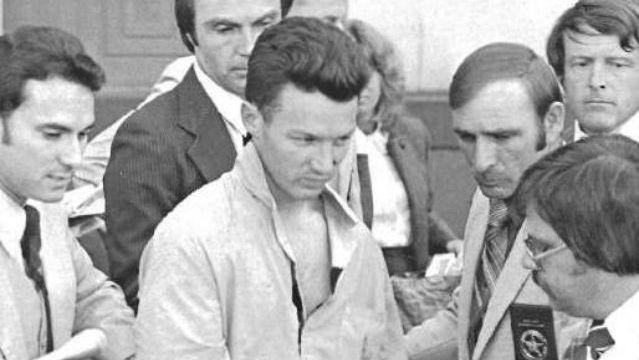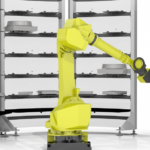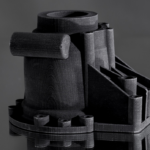

The full extent of industrial espionage is surely more prevalent than reports indicate, and the advent of additive manufacturing with its electronic file-based design processes is a frontier in an ongoing series of skirmishes in technological border wars.
The news that a former employee of United Technologies Corp. was recently placed under arrest by federal authorities for allegedly trying to shuttle sensitive, military aerospace-related documents to China was surely the least of the possible problems facing companies and governments as they increasingly move their design and development work to digital realms.
Federal authorities say Yu Long, who once worked on additive manufacturing and casting processes for Pratt & Whitney, had a history of involvement on projects like the F119 engine, a highly sophisticated powerplant used in the F-22 Raptor, and on the F135 engine which powers the F-35 Lightning II Joint Strike Fighter.
Long was arrested in Ithaca, NY, and the feds say they also found documents in his possession which were deemed to be “critical in the development of technologically advanced titanium for use in advanced aircraft.”
He was caught, it should be noted, carrying printed documents, and that begs the question: would authorities have had any inkling of his activities if those documents were stored on a thumb drive? On a laptop? In his phone?
Reuters says Long worked as a senior engineer for a Connecticut defense contractor between 2008 and early 2014, and prosecutors say authorities stopped him at John F. Kennedy International Airport in August for carrying undeclared cash, documents for a new Chinese corporation, and an application to work at a government aviation research facility in China.
In his defense, Long says the documents were publicly available online — although the FBI could not find the documents using the links he provided.

Long, a PhD and senior scientist in the Physics Sciences Department at the United Technologies Research Center, was a technology development leader and modeling specialist at Pratt & Whitney for additive manufacturing and casting process innovation who received his doctorate in mechanical engineering from Clemson University in 2008. At Pratt & Whitney, Long was heavily involved in multiscale, physics-based, additive manufacturing process development, casting process development, integrated computational material engineering, design, and manufacturing integration.
A company unnamed in the criminal complaint and the US Air Force say the estimated value of the documents Long is accused of taking is somewhere north of $50 million.
As it stands, Long is charged with transporting goods stolen from the United Technologies Research Center, and the Federal Bureau of Investigation and US Homeland Security Investigations participated in the case. He faces a maximum sentence of 10 years in jail and a fine of up to $250,000 if he’s convicted of the charges.
According to the InfoSec Institute, a group founded in 1998 by a team of information security instructors, the security issues related to digital design processes aren’t limited to the aerospace industry.
“Highly sophisticated European criminal gangs operating worldwide have been using 3D printers to operate illegal activities on a large scale. Criminal gangs could be interested in creating counterfeit products or device parts for making profits, but security experts are more worried by the possibility that those components could be used for sabotage,” they say. “Counterfeit products could be introduced into the supply chain in order to cause anomalies and faults in the products designed.”
The IP Commission Report from the National Bureau of Asian Research says US businesses lose $300 billion a year from IP theft by foreign countries – and they add that China is the main culprit in those losses.
According to the Progressive Policy Institute, 3D printing/additive manufacturing technologies serve as “a boon for China’s massive counterfeiting industry.”
“With the aid of printers that turn out more refined products, what are now fairly crude sweatshop-style operations could evolve into high-tech black market fabricating shops,” says one PPI report. “There is also mounting worry about online piracy. Without tough enforcement of copyright laws, U.S. manufacturers may face unfair competition from companies using stolen designs.”
If you’d like to read the full criminal filing in the Yu Long case, you can check it out here.
Let us know what you think the potential imapct of spying is in the Additive Manufacturing and Industrial Espionage thread at 3DPB.com.
If you're looking for affordable 3D visualization services in the USA, our platform provides an ideal solution for all your architectural and real estate needs. Through our service, you can access high-quality 3D renderings at competitive prices without compromising on quality. Whether you need interior visualizations, exterior renderings, or architectural animations, our team ensures that you get professional results that fit within your budget. With our support, you can make your projects visually stunning while saving on costs, all with a quick and straightforward process.
Through our site, you can easily order affordable 3D visualizations for your projects, whether for a residential property, commercial development, or architectural design. We understand the importance of staying within budget, and that's why we offer tailored solutions to ensure you get the best value for your investment. Our experts work efficiently to provide you with realistic, photorealistic 3D images that will elevate your presentations and attract clients, making your property stand out in the market.






